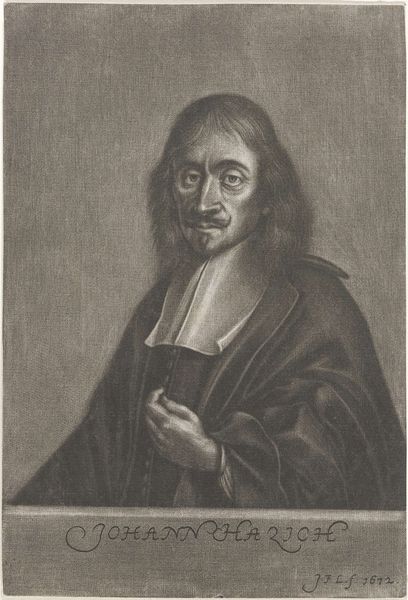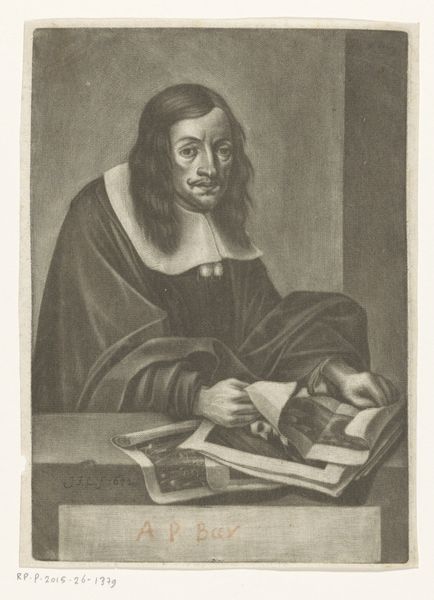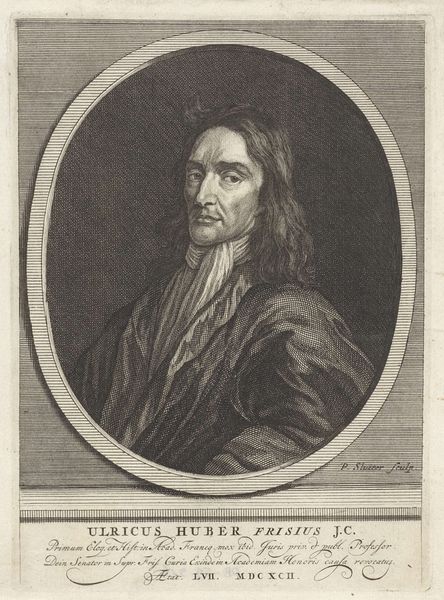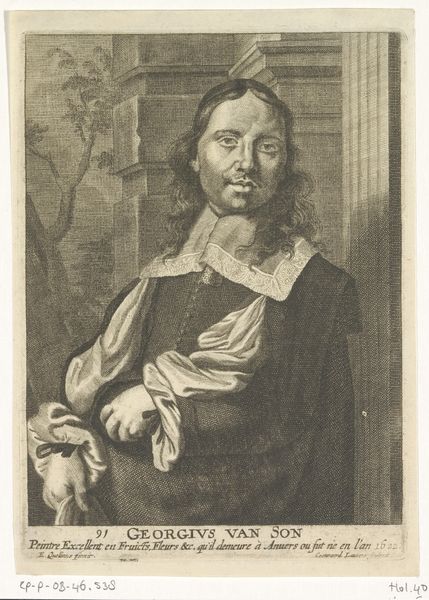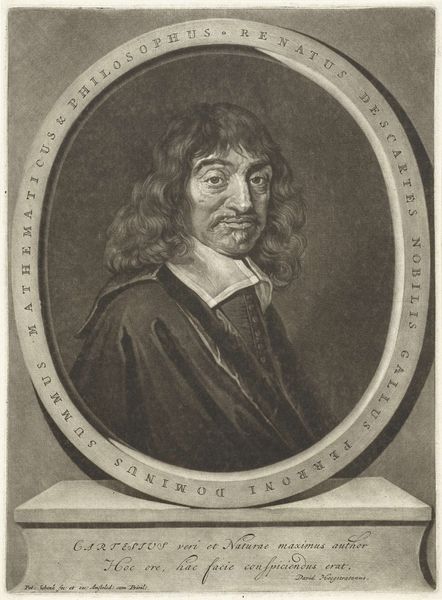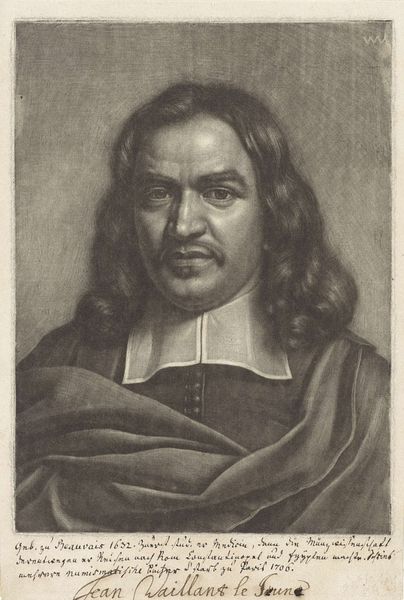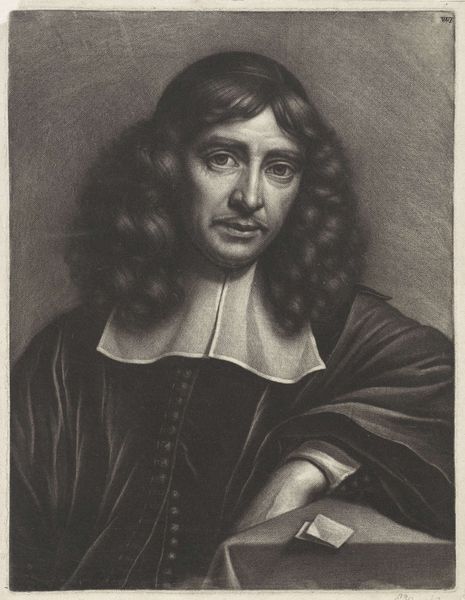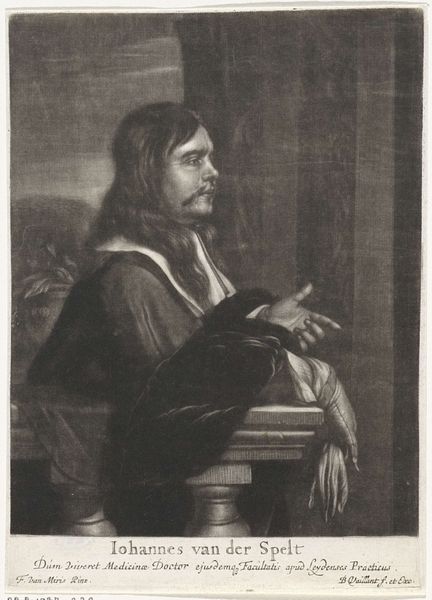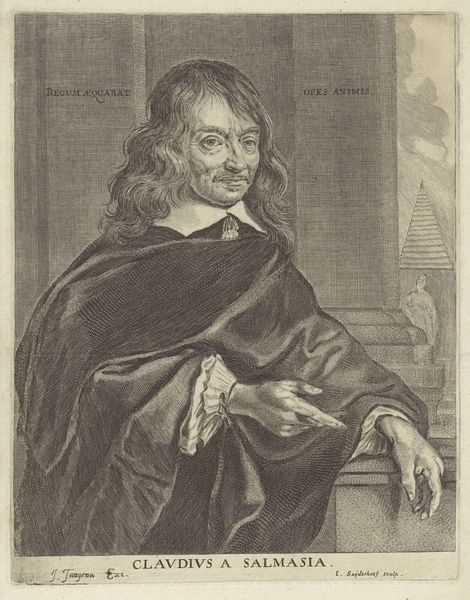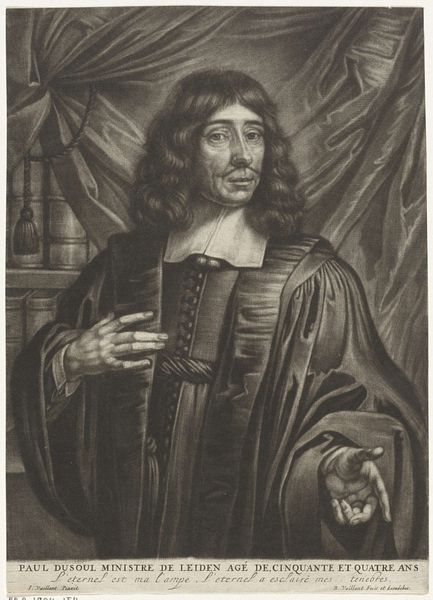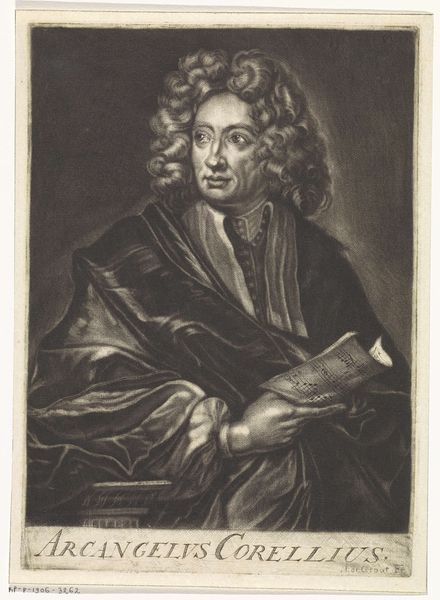
print, engraving
#
portrait
#
baroque
# print
#
history-painting
#
engraving
Dimensions: height 205 mm, width 138 mm
Copyright: Rijks Museum: Open Domain
Editor: This is Johann Friedrich Leonard’s "Portret van Michael Fennitzer" from 1672, an engraving. It’s striking how formal the figure appears, yet there’s a certain weariness in his eyes. What catches your eye when you look at this portrait? Curator: The immediate appeal is the complex encoding. This portrait uses recognizable visual tropes of status – the dress, the book, even the slight air of melancholy – to suggest Fennitzer’s intellectual weight. It makes me wonder what symbols were carefully chosen here to ensure cultural continuity through this representation. What does this imagery transmit to later generations? Editor: You mentioned encoding. Are there specific symbols or visual cues we should pay attention to? Curator: Consider the open book under his hand. It isn't necessarily about the text, but the signifier of learning and knowledge. This was during the Baroque era, which loved layering meaning. Think of the dark tones, how they add gravitas. His somber expression could reference the weight of knowledge and the serious nature of the copper printing trade. Does this evoke in you any associations with contemporary visual representations of intellectual figures? Editor: I see what you mean. The somberness is intentional, projecting seriousness and importance. But were there alternative ways to convey that at the time? Curator: Of course! Artists could choose different symbols— a globe signifying global awareness, scientific instruments representing the rise of empirical study, even architectural elements could contribute. The choice of the book and dark tones signals something specific about the type of intellectual Fennitzer aimed to project. What are your final thoughts? Editor: I now recognize the layers of meaning carefully placed by the artist. It certainly enriches the viewing experience. Curator: Agreed. By decoding some of these historical visual cues, we access a richer understanding of cultural values and aspirations during that time.
Comments
No comments
Be the first to comment and join the conversation on the ultimate creative platform.
